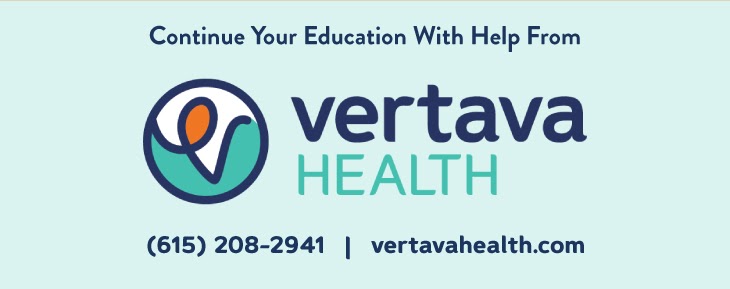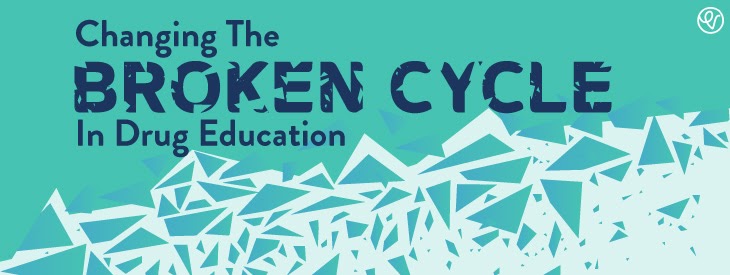Remember D.A.R.E. class? Remember how none of your classmates ever used alcohol or drugs after attending D.A.R.E.? Of course you don’t, because a lot of people used drugs and alcohol even after going through D.A.R.E. Maybe you did yourself. So what happened here? For a program that cost the nation over a billion dollars a year, you’d hope for a better outcome. While the program is widely regarded as an epic failure today, what’s done is done. Now, it’s more important to look at the program and understand why it didn’t work as well as how we can educate children and teens about the risks of alcohol and drug use in a way that’s actually effective. Consider these questions about your own experience in D.A.R.E. or health class: Did that program stop you from experimenting with substances as a teenager or young adult? Did you remember to “Just Say No” when you were offered a joint at a party that one time? Did you think about it when your friends said “Just one more shot!”? Probably not.
Current Drug Education Programming Is Failing—And Has Been
Research and analysis have proven there have been missteps in drug and drug use education for many years. With the goal of abstinence in fear-based education through programs such as D.A.R.E., completely abstinent teens are hard to find. 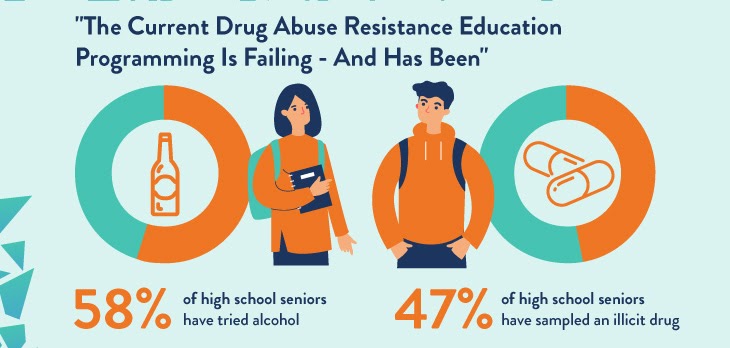 According to DrugUse.gov, 58 percent of high school seniors have tried alcohol and 47 percent have sampled an illicit drug of some sort. Rates of substance use among younger teenagers are also on the rise across the board. From 2017 to 2020 the rate of eighth graders in the United States that have tried alcohol at some point has risen past 25 percent. Notably, rates of eighth graders having tried substances like cocaine, amphetamine, and hallucinogens have risen. The largest rise, however, has been in inhalants. In just the past four years, the percentage of eighth graders who have tried inhalants has risen 3.7 percent. As rates of substance use rise, changes to drug education funding and resources continue to evolve. Recently, the fifth model of The Healthy People initiative, known as “Healthy People 2030”, announced their public health objectives for the United States. These objectives aim to assist state programs in building their own models to achieve possible funding from the federal government.
According to DrugUse.gov, 58 percent of high school seniors have tried alcohol and 47 percent have sampled an illicit drug of some sort. Rates of substance use among younger teenagers are also on the rise across the board. From 2017 to 2020 the rate of eighth graders in the United States that have tried alcohol at some point has risen past 25 percent. Notably, rates of eighth graders having tried substances like cocaine, amphetamine, and hallucinogens have risen. The largest rise, however, has been in inhalants. In just the past four years, the percentage of eighth graders who have tried inhalants has risen 3.7 percent. As rates of substance use rise, changes to drug education funding and resources continue to evolve. Recently, the fifth model of The Healthy People initiative, known as “Healthy People 2030”, announced their public health objectives for the United States. These objectives aim to assist state programs in building their own models to achieve possible funding from the federal government. 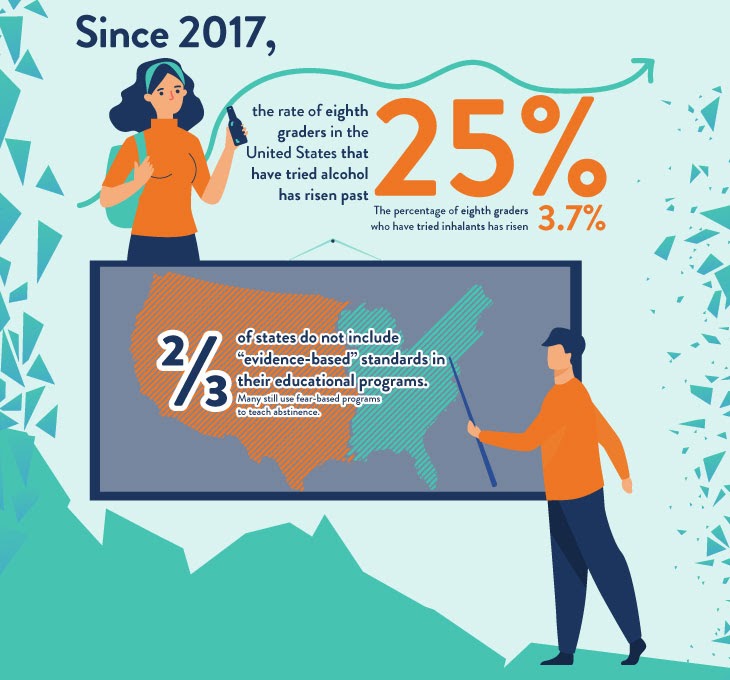 During the fourth iteration, which closes in 2020, there was a detailed piece regarding funding in states for drug education. The intent was to bring states to a similar level across the board in what form of education was being offered to students in schools and to teenagers in general. According to a 2014 study, two-thirds of states do not include standards in all content areas considered “evidence-based.” Many still use fear-based programs to teach abstinence. While this makes sense given our desire to steer our children away from use, it’s notoriously ineffective. As parents and as a society, we have to be willing to critically examine efficacy to make data-informed decisions that may go against our instinctive reactions. In the objectives covered in Healthy People 2030, the portion regarding funding for drug education has been removed, though there are still objectives that encourage drug education and reducing the rates of adolescents using substances such as alcohol and marijuana.
During the fourth iteration, which closes in 2020, there was a detailed piece regarding funding in states for drug education. The intent was to bring states to a similar level across the board in what form of education was being offered to students in schools and to teenagers in general. According to a 2014 study, two-thirds of states do not include standards in all content areas considered “evidence-based.” Many still use fear-based programs to teach abstinence. While this makes sense given our desire to steer our children away from use, it’s notoriously ineffective. As parents and as a society, we have to be willing to critically examine efficacy to make data-informed decisions that may go against our instinctive reactions. In the objectives covered in Healthy People 2030, the portion regarding funding for drug education has been removed, though there are still objectives that encourage drug education and reducing the rates of adolescents using substances such as alcohol and marijuana. 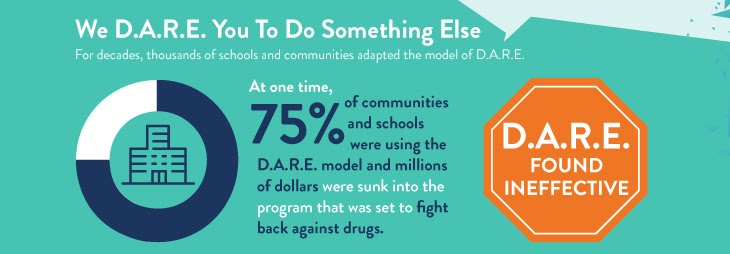
We D.A.R.E. You To Do Something Else
As drug use and consumption increased in schools, and The War On Drugs campaign waged to combat illegal drugs in the United States, in the late 1970s and early 1980s, programs like Drug Use Resistance Education (D.A.R.E.) got their start. For decades, thousands of schools and communities adapted the model of D.A.R.E. At one time, as many as 75 percent of communities and schools were using the D.A.R.E. model and millions of dollars were sunk into the program that was set to fight back against drugs. As rates of children using illicit substances rose, any program at all that was aimed at slowing or stopping drug use was set to receive praise and approval from parents. D.A.R.E. took off by having law enforcement officers telling kids in schools that drugs are bad, and you should avoid them at all costs. After nearly two decades of D.A.R.E. being the leading drug education platform in the country, research began to come out indicating that the program was ineffective. In some cases drug use stayed the same and in others it actually increased. In the end, other programs were found to be more effective. Research into the failures of programs including the Research Triangle Institute’s findings in 1994 that programs like D.A.R.E. had no measurable effect on teenage drug use, and other programs seemed to fare better in the short- and long-term. The study concluded that D.A.R.E. could improve, but without improvement it should be replaced. Again, that research was 26 years ago!
Building Better Education Models
In the past two and a half decades since research began to show that fear-based programs were—and continue to be—ineffective, models and ideas about how to not only curb the rise of adolescent drug and alcohol use while reducing the stigma around substance use and addiction have come together. 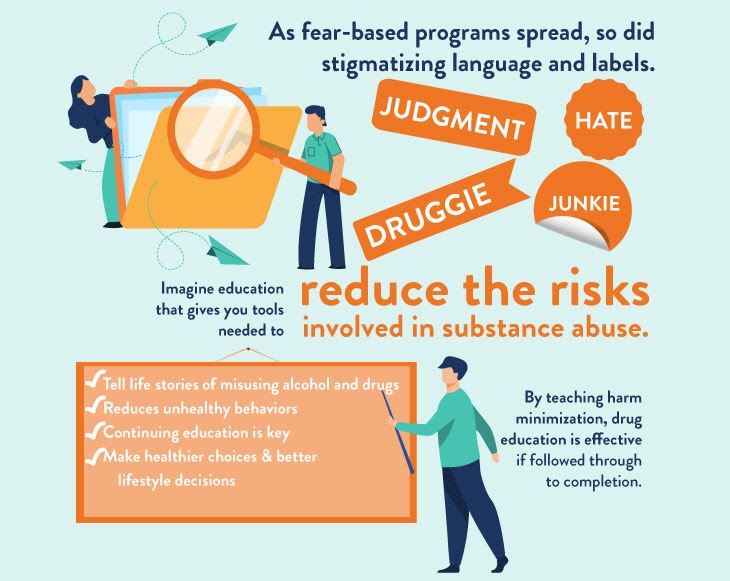 As fear-based programs spread, so did stigmatizing language and feelings toward people with substance use disorders. Programming included the use of phrases like “junkie,” creating an image in children’s minds of what addiction and drug use are. If you again think back to your childhood and the programs that were taught in school, you remember that is where you learned to harbor hate for drugs instead of an understanding. Those lessons followed you into adulthood where you possibly saw friends and family members battling substance use disorders, and instead of knowing how to help, you only knew how to judge. Imagine if the programming you were given had taught you more than just to never use drugs. Imagine if it also provided you with the information needed to reduce the risks involved in substance use. Think back to that time you found out your friend was experimenting with drugs. Maybe they were smoking marijuana occasionally with their older siblings and friends. Perhaps they were trying harder substances like pills that they were stealing from their parents medicine cabinet. You can remember those situations vividly to this day, because of the gravity of the situation and the education that you received telling you that they were doing something wrong. Would the lessons gained from an education course that taught about the risks instead of fear, have kept you from following them into a pattern of substance misuse? Would they have allowed you to help your brother/sister/son/daughter while they were dealing with alcohol or drug use? Would you be able to say that you kept someone that you’ve lost alive? We know that using evidence-based programming can provide the knowledge needed to make an impact on drug consumption. We have learned through studies that we can reduce alcohol and drug consumption and the harm that comes with them. By teaching harm minimization, drug education is effective if followed through to completion. Evidence shows that telling the real life stories of misusing alcohol and drugs can be impactful in reducing individual unhealthy behaviors within families and communities. Research shows that continued education over time will teach us to make healthier choices and better lifestyle decisions.
As fear-based programs spread, so did stigmatizing language and feelings toward people with substance use disorders. Programming included the use of phrases like “junkie,” creating an image in children’s minds of what addiction and drug use are. If you again think back to your childhood and the programs that were taught in school, you remember that is where you learned to harbor hate for drugs instead of an understanding. Those lessons followed you into adulthood where you possibly saw friends and family members battling substance use disorders, and instead of knowing how to help, you only knew how to judge. Imagine if the programming you were given had taught you more than just to never use drugs. Imagine if it also provided you with the information needed to reduce the risks involved in substance use. Think back to that time you found out your friend was experimenting with drugs. Maybe they were smoking marijuana occasionally with their older siblings and friends. Perhaps they were trying harder substances like pills that they were stealing from their parents medicine cabinet. You can remember those situations vividly to this day, because of the gravity of the situation and the education that you received telling you that they were doing something wrong. Would the lessons gained from an education course that taught about the risks instead of fear, have kept you from following them into a pattern of substance misuse? Would they have allowed you to help your brother/sister/son/daughter while they were dealing with alcohol or drug use? Would you be able to say that you kept someone that you’ve lost alive? We know that using evidence-based programming can provide the knowledge needed to make an impact on drug consumption. We have learned through studies that we can reduce alcohol and drug consumption and the harm that comes with them. By teaching harm minimization, drug education is effective if followed through to completion. Evidence shows that telling the real life stories of misusing alcohol and drugs can be impactful in reducing individual unhealthy behaviors within families and communities. Research shows that continued education over time will teach us to make healthier choices and better lifestyle decisions.
How Can We Solve This Problem Together?
It is completely fair to ask what we should do differently since we know fear-based educational programming is not working. The answers have come over years of study and research conducted by the brightest minds. We have seen numerous reasons why programs such as D.A.R.E. have failed on a large level. “It failed because they had police officers going into schools and using too much of the fear tactic so that kids didn’t feel it was safe to have real conversations about drugs, alcohol, and addiction,” Vertava Health Director of Clinical Services, Caitlin Hedges, said. “There was too much judgment and fear involved in the approach. The foundation of educating early and often is excellent, but it has to be at the educational level of the age they are working with, and again, fear and judgment should never be the approach.” While fear and judgment remain a leading platform across the United States, moving toward a platform of honesty and teaching using real-life scenarios can be a stronger and more sturdy foundation for drug education. “An approach where kids can identify with, such as a skit or a play with realistic scenarios that could occur in the community or in their own home, and then discussion and education afterwards [would be more effective],” Hedges said. “There also needs to be follow-up to that discussion and children need to know that there is a safe place to go to address real-life situations if a drug-related scenario comes up, or even to go to ask questions, without judgment and fear.” Skits that teach students what to do when they are offered drugs would help teenagers and young adults better understand the situation at hand. Far too often, teenagers grow up in the United States with the mindset that they should “Just Say No”, when in reality we grow up and realize that just saying no is not possible under the weight of circumstances that arise in life. A more realistic approach to showing students and involving them in skits is bringing in real-life situations that arise. Maybe the student has been bullied for year on end and the only way they feel like they can escape is through substance use. Teach the students that this may be a feeling they have in the future, and there are resources out there to help them if they reach the point where they feel like it is their only option. There are big steps to be taken in shifting course from what has been the most common form of education for many decades, beginning with the shift from shame and judgment to support and understanding. “Programs should get a nationally recognized association or group to continue with discussions about addiction,” Hedges said. “Addiction, treatment for addiction, and stigma should be discussed regularly so that it is no longer a taboo subject that is surrounded by shame and judgment, but rather support.” Reducing stigma, broadening education, and instilling understanding also falls in the laps of the treatment providers across the country. Treatment centers entering their communities to hold an open dialogue about substance and alcohol use disorder are key in shifting focus, ending stigmatizing language, and strengthening understanding across the country.  Hedges summed it all up by saying, “It is vital for treatment providers to integrate into the community to provide education on the services they offer, how prevalent substance use disorder is, and what to do to support their loved ones that struggle with substance use disorder.”
Hedges summed it all up by saying, “It is vital for treatment providers to integrate into the community to provide education on the services they offer, how prevalent substance use disorder is, and what to do to support their loved ones that struggle with substance use disorder.”
Continue Your Education With Help From Vertava Health
As the struggle to end the opioid epidemic and slow the rates of opioid use and overdose deaths continues in the United States, there are opportunities to find the answers you may have missed as you grew up. Treatment centers like Vertava Health have dedicated themselves to answering questions that any person has. Opportunities to learn are available on websites through blogs, infographics, guides, and more. By engaging with these lessons you can grow your knowledge and help end stigma and misconceptions passed down for generations about substance use and addiction. For those needing care, looking into care for a loved one, or simply looking for more information, you can call Vertava Health at 844-470-0410. 